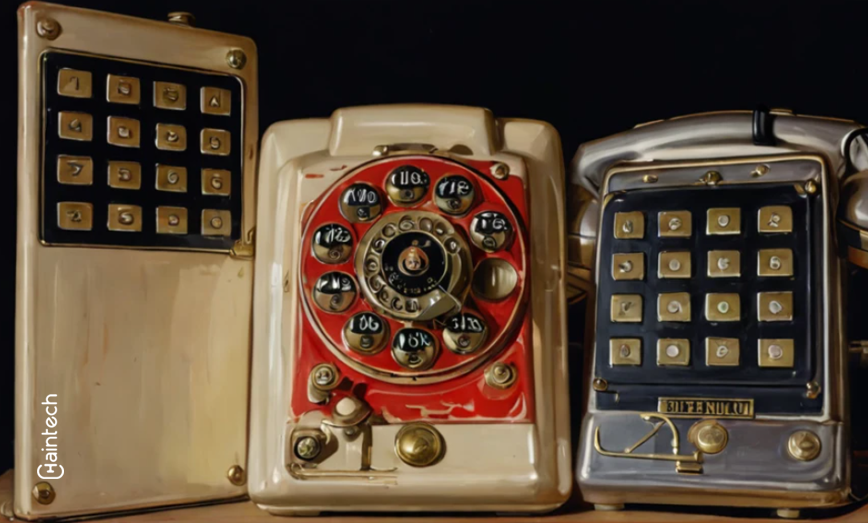A Journey from 1955 to 1980: The Intriguing World of Phone Phreaks

Unearthing the Untold Stories
In the mid-20th century, a peculiar subculture emerged that would forever alter the landscape of telecommunications. Enter the fascinating realm of “phone phreaks” – ingenious individuals who exploited vulnerabilities in the telephone network, leaving an indelible mark on the history of technology and security.
The term “phreak” originates from the fusion of “phone,” “free,” and “freak.” The intriguing world of phone phreaking had its genesis in the late 1950s, marked by a discovery that certain whistles could replicate the 2,600 MHz pitch of the phone routing signal. The discovery of the 2,600 MHz pitch was a pivotal moment, unlocking a universe where individuals could manipulate phone systems, ultimately birthing the phenomenon we now know as phone phreaking.
The Tale of Famous Phone Phreaks
1. David Condon’s Whistle Symphony (1955)
David Condon’s 1955 experiment with whistling his “Davy Crockett Cat” and “Canary Bird Call Flute” into his phone demonstrated how phone systems could be tricked into recognizing secret codes and granting access. Condon’s case served as an early example of social engineering techniques employed by phone phreaks.
2. The Whistle that Shook the System (1957)
In 1957, our journey progresses with the remarkable story of Joe Engressia, a seven-year-old blind prodigy affectionately known as Joybubbles. Imagine a world where a child’s perfect pitch uncovers a high-pitched tone on a phone line. Joe learned to whistle at a frequency that granted him unauthorized access to phone networks, laying bare a critical vulnerability that set the stage for the era of phone phreaking.
3. Captain Crunch’s Cereal Box Whistle (1970s)
The unique distinction of facilitating phone phreaking belongs to a solitary cereal box toy—the Cap’n Crunch Bo’sun whistle. Originally designed to mimic the whistles used by sailing officials, these multicolored whistles were included in Cap’n Crunch cereal boxes starting in the mid-1960s. One such whistle found its way into the hands of John Draper (aka Captain Crunch) a former U.S. Air Force electronics technician and a pivotal figure in the early days of phone phreaking. Phone phreaks like Draper utilized specific tones to outsmart AT&T’s analog system, securing free long-distance calls.
4. Apple’s Tech Duo Dabbles in Phone Phreaking (1975)
John Draper’s ingenuity didn’t stop at the Cap’n Crunch whistle; he ventured into creating “blue boxes”, devices capable of replicating perfect tones, including the crucial 2600Hz pitch. This caught the attention of college students Steve Jobs and Steve Wozniak after reading about blue boxes in an article published by Esquire in 1971.
Intrigued, Jobs and Wozniak sought out Draper to delve into the intricacies of blue boxing. The boxes, beyond their original purpose, opened doors to mischief, as Wozniak even attempted to prank-call the Pope. The duo’s entrepreneurial journey began with the sale of these blue boxes to aspiring phreakers.
The Art of Exploiting Vulnerabilities
The exploits of phone phreaks during this period unveiled critical vulnerabilities within the telecommunications infrastructure, prompting a reevaluation of security measures. Let’s delve into the vulnerabilities of the past to secure the present and the future.
1. Tone-based Vulnerabilities
During this era, a phreak could emulate the tone used to indicate the end of a call, allowing them to terminate a call without incurring charges. Another common exploit involved mimicking the tones used for operator services, granting phreaks access to long-distance or international calls without proper authorization.
The realization that these vulnerabilities existed underscored the need for improved security in the signaling and control mechanisms of telecommunications. In response to these exploits, the telecommunications industry began transitioning to more secure and sophisticated signaling methods, such as out-of-band signaling and digital protocols, to
prevent unauthorized access and manipulation by phone phreaks and other individuals seeking to exploit system weaknesses. This historical context highlights the ongoing cat-and-mouse game between security measures and those who seek to exploit vulnerabilities in telecommunications systems.
2. Social Engineering
Phone phreaks mastered the art of social engineering, showcasing the need for enhanced employee training and awareness to prevent any unauthorized access.
Companies must empower their staff with knowledge about potential social engineering tactics, encouraging a vigilant and security-conscious workforce. By understanding the historical context of these early exploits, organizations can fortify their defenses against modern-day threats, ensuring the integrity and security of their communication systems.
Parting Words
The rise of phone phreaks from 1955 to 1980 is not just a historical footnote; it’s a vivid tale of ingenuity, vulnerabilities, and the ever-evolving dance between hackers and security measures. As we navigate the future of telecommunications, these stories serve as a poignant reminder of the importance of proactive security measures, robust authentication protocols, and ongoing security awareness to protect our critical infrastructure from unauthorized access and exploitation.









